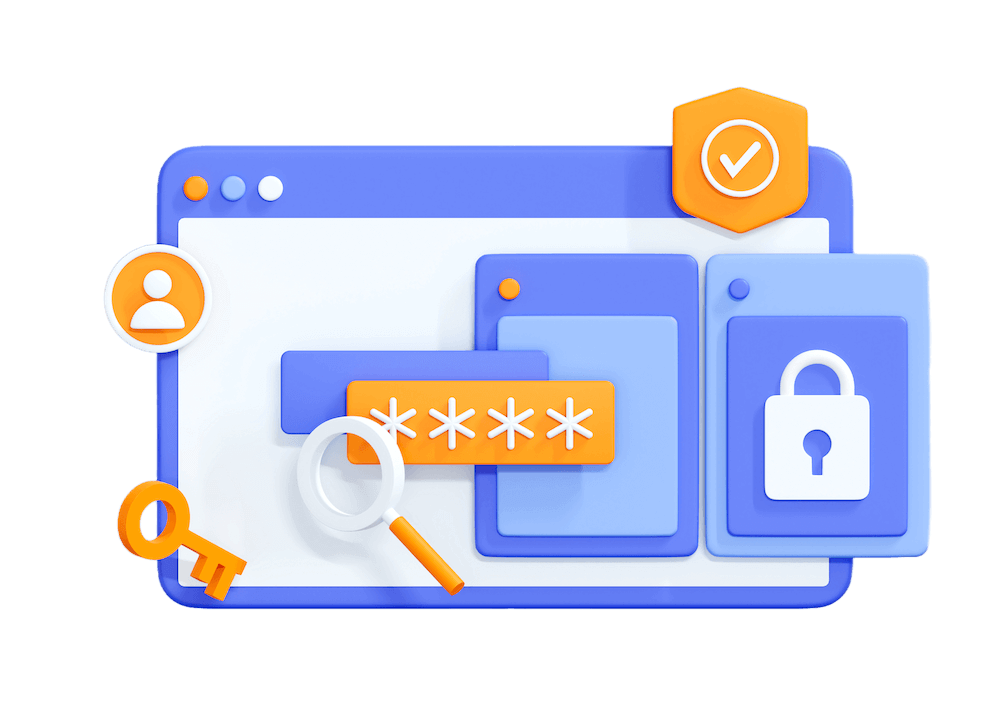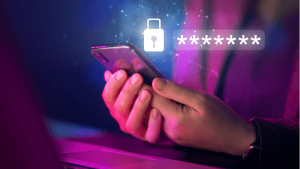
Published: 11/04/24
We live in an era where every purchase is just a click away, and the vast marketplace of the internet brings the world to your doorstep. Yet, this convenience comes with a caveat: the risk of cyber threats. Every year, millions of people throughout the EU and UK deal with identity theft, with credit card fraud being the most common problem (ECB).
Securing your online transactions is the best way to enjoy spending online and stay safe. In this guide, we’ll share our step-by-step guide to seamless online security.
What are the most common types of online fraud?
Consumers are most often faced with the following threats when making transactions online:
- Phishing: Cybercriminals imitate professional organisations to access your information.
- Card Fraud: Stealing debit and credit card information from consumers.
- Identify Theft: Accessing an individual’s personal information, including date of birth, national insurance numbers and addresses.
- Shipping Scams: Cybercriminals will use stolen payment information to ship the items to another address.
- Account Takeovers: Fraudsters can gain access to social media accounts, streaming services and other websites.
Step 1: Invest in security software
The internet is a vast network of entertainment and information—but it’s also home to spyware, spam and malware. Antivirus software is the gold standard for protection against viruses, trojans, adware, and spyware.
The software constantly scans your computer, flagging potential threats and blocking them before they damage your system. Numerous solutions are available at different price points, but antivirus software is a wise investment.
Step 2: Keep your personal information safe
 We all know now that using the same passwords is never a good idea. Protect your personal information by following best practices instead of using your partner’s or pet’s name. Passwords that are hard to crack will prevent hackers from accessing your information.
We all know now that using the same passwords is never a good idea. Protect your personal information by following best practices instead of using your partner’s or pet’s name. Passwords that are hard to crack will prevent hackers from accessing your information.
While public WiFi offers some benefits, it’s also one of the easiest ways to expose yourself to fraud. Never make any transactions through a public network; instead, use your mobile or computer.
Step 3: Be careful with emails and promotions
Would-be cybercriminals make it easy for people to fall into their traps. You might read your emails and notice your ‘bank’ is asking about your account information or see an exclusive discount that seems too good to be true.
Online scams have evolved since the foreign prince trap but are still a significant issue. By using banks and other seemingly innocuous disguises, scammers can get your personal information without you knowing about it.
Remember:
- View the sender’s email address to check if it matches the organisation. Some scammers will change one letter or add a special character, making it easy to spot—if you’re looking for discrepancies.
- Emails or offers with spelling errors are always red flags because most organisations have strict processes to ensure professionalism.
- Never hand over any personal information without speaking to your bank. No bank will ask for your account details in an email.
- Avoid clicking on any links from senders you don’t know. Many scammers use shortened links to hide the web page you’re being diverted to.
- Activate spam filters for email and SMS messages.
- If something seems too good to be true, it always is. Use common sense and don’t get caught up in offers of money and free products.
Step 4: Only use websites with SSL certificates
Secure Socket Layers (SSL) are protocols that utilise encryption when securing a website and a user’s web browser. Websites with SSL certificates have measures in place that protect your personal information and make it inaccessible to others.
You’ll know if a website is secure, because it will show a padlock icon in the browser and contain HTTPS in the URL. Certification also verifies the website is secure and not involved with phishing or other scams.
While most websites use SSL certificates, avoiding those that don’t is important. Even if they look relatively harmless, scammers could still access your information and steal it.
Step 5: Protect your personal information by using a virtual card
Sometimes, even with all the necessary steps, you can still fall victim to fraud. One of the best ways to make transactions online and avoid any negative repercussions is to use a prepaid virtual card.
These cards are pre-load only and not linked to your bank account. Instead, you can use them for transactions at merchants that accept MasterCard. Some cards are single-load, while others are reloadable, offering maximum convenience.
Many people buy a virtual card online because they can shop safely without worrying about anyone accessing their bank or credit card information. These cards also come with superior encryption technology and 3D Secure technology.
Step 6: Log out of your accounts
Last but definitely not least, log out of your accounts when you’re not using them. Whether it’s an online shopping platform or your bank, signing out can prevent unauthorised access and keep your accounts safe.
It’s also unwise to save your passwords on your laptop or phone, as scammers can access the information if they gain control of your system. A password manager offers more security, as it stores your account details and is encrypted.
Final thoughts
The internet will continue to make online shopping and banking more accessible, and its many benefits far outweigh the potential security issues. Following the steps in this post will help you avoid cybercrime and stay safe online.
A Getsby Virtual Card gives you maximum control over your spending while protecting your personal information. Our Black Card is single-load only; customers can get up to 25 cards a month, while the Green Card is reloadable and lasts three years.
No credit checks are required, so you can complete the sign-up process in minutes. Please feel free to contact us if you have any questions or need help choosing your card.
Order your Virtual Cards online
Apply for a digital prepaid card online and receive the activation code via email within 2 minutes.



